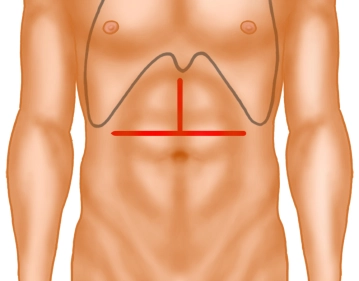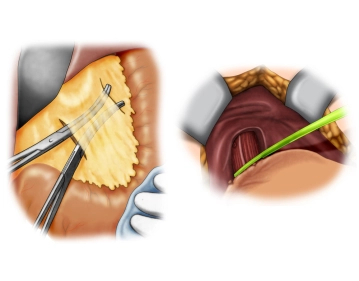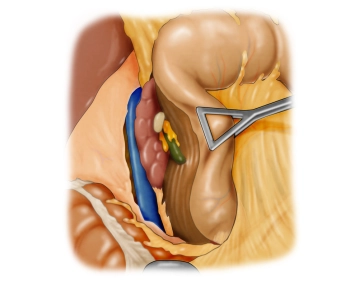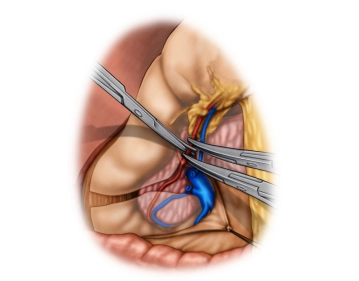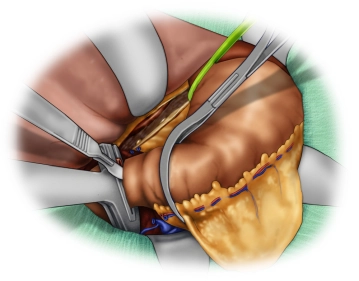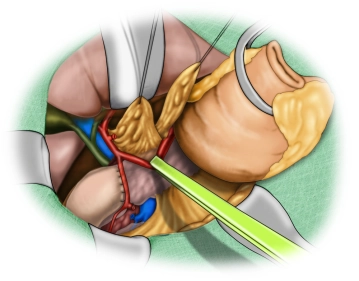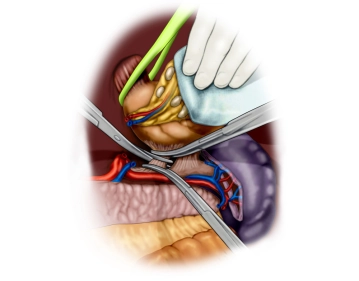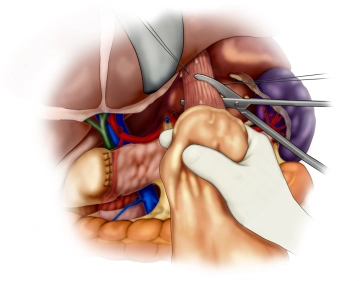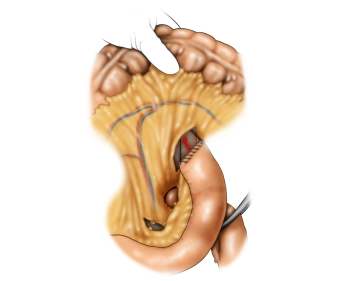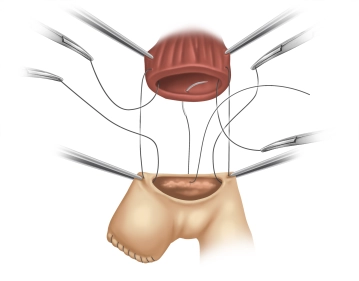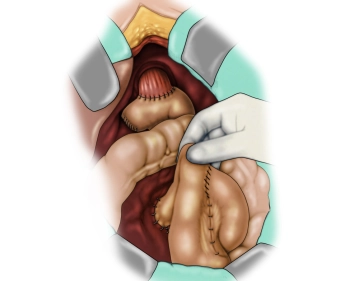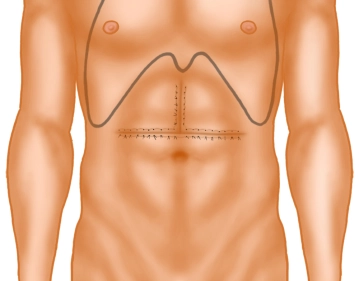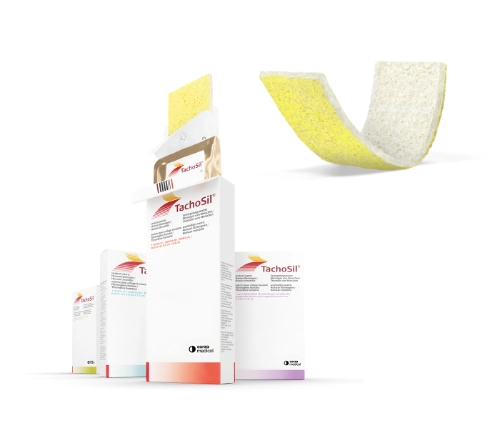Construct the end-to-side esophagojejunostomy as a hand sewn single-layer anastomosis. First, incise the jejunal limb passed retrocolically into the upper abdomen at its antimesenteric aspect over 3 cm–5 cm. Follow this by preplacing the sutures for the posterior wall. Preplace all sutures of the posterior wall first, with the later knots resting on the inside. At the jejunum pass these seromuscular sutures from the inside out and then full thickness through the wall of the esophagus from the outside in. Use absorbable sutures size 4/0, e.g., Vicryl. With a sponge advance the jejunum along the preplaced sutures of the posterior wall toward the esophagus. Once the posterior wall of the esophagus has been aligned, tie the sutures of the posterior wall one by one. Construct the anterior wall also as a hand sewn single-layer anastomosis, but this time with the knots on the outside.
Note:
1. Before suturing the anterior wall, you may want to pass a nasogastric tube into the efferent jejunal limb (not shown in the video).
2. Optionally, the anastomosis can be fashioned with a circular stapler (EEA, 25mm).


